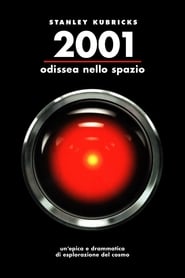Douglas Trumbull, then just twenty-three, was working under contract on pre-production research for the film. When the project moved to England, Trumbull cold-called Stanley Kubrick and asked if he could continue to work on the project. Kubrick hired Trumbull, who spent the next two-and-a-half years as one of the film's four visual effects supervisors. Kubrick's vision for the stargate sequence vaguely amounted to wanting "the camera to go through something." After seeing the tests of what Trumbull was planning to do, Kubrick authorized Trumbull to move forward. The stargate sequence was accomplished with the use of a rig that combined elements of stop-motion animation, a "slit-scan," and the basic principles of streak photography. As outlined in Trumbull's own description, a long-exposure camera was mounted onto a track pointed directly towards a sheet masked in black with the exception of a thin slit. According to Cinefex magazine #85, the final build consisted of a six-foot-tall rotatable rectangle of sheet metal with a narrow opening cut into it. This sheet stood in front of a mechanized twelve-foot-long glass panel. This panel was backlit and affixed with various light-transmitting materials, namely transparencies and celluloid gels. The stargate artwork as specified in Jerome Agel's essential 1970 text The Making of Kubrick's 2001 included high contrast negatives of everything from optical art paintings to architectural drawings to prints of electrical circuits. "The room was painted totally black," recalls Trumbull to Cinefex. "We erected our slit with a light source directly behind it. Then we built a track leading up to the slit and mounted a 65mm camera on it with a shutter that could stay open on one frame of film. To modulate the lighting coming through the slit, we used high-contrast negative transparencies that would slide behind the slit as the camera moved toward it." Trumbull continues: "By having this artwork move behind the slit, backlit, we were able to effectively turn light on and off. As we did that, we moved the camera along fourteen feet of track toward the slit -- a full fourteen feet for each exposure. It took about forty-five seconds to a minute per exposure, and each frame was made up of two exposures." As Trumbull underlines, the camera was basically automatic. This included a brake system that kept the camera from bulldozing through the glass plane. A small accelerator motor gradually increased the speed of the stargate over the course of the sequence. "Oftentimes that camera would run for thirty-six hours continuously to shoot one take," Trumbull recalls. "All together, we spent at least six months working on the slit-scan footage." in other words, Trumbull's rig was turning a camera inside-out; externalizing the shutter as a physical slit in the real world. The effect was, as Trumbull himself put it in a lecture at the TIFF Bell Lightbox, "completely breaking the concept of what a camera is supposed to do." By tracking the camera towards the light source with a long exposure, the resulting streaks of light appear to move towards the camera from a single point. In short, this is the ultimate boon of slit-scan, as described by special photographic effects supervisor Con Pederson in a 1965 letter to Kubrick: that it can "simulate smooth, continuous motion variations from a single initial element, in two, or three-dimensional configurations." In that same letter, Pederson supposes that the technique might prove helpful with respect to sussing out the film's ending. Indeed, the matter of how to introduce the stargate sequence was never quite clear. For example, in one scenario, Dave's shuttle was going to pass through the monolith itself. In the end, projections of slit-scan footage that began total blackness combined with a starscape provided a solution. The transition "looked terrific" Trumbull recalls. As the fine folks at Filmmaker IQ have remarked, the time and space-bending aspects of slit-scan photography poetically mirror the on-screen experience of Dr. Bowman as he hurtles through the stargate. And speaking of Bowman, it's worth noting that the intercut stills of the surviving astronaut actually serve a formal purpose. Namely: to bridge the slit-scan footage's flips from a vertical axis to a horizontal one. Manipulated areal footage of Scotland and Monument Valley make up the oddly-colored landscapes that conclude the sequence. By randomly mixing up the three-strip technicolor process in an optical printer, the effects technicians were able to produce evocative color combinations. Slit-scan photography has been around in some variation since the mid-1800s. The technique involves placing a sliding slit between the subject and the photographic plane. This gradually exposes the photographic medium as the slit travels from one side of the frame to the other. Trumbull placing the slit outside the camera in the 2001 stargate sequence was an innovation. In fact, in 2009, the Society of Camera Operators awarded Trumbull with a technical achievement specifically for his work on slit-scan motion picture photography. One of the first uses of the slit-scan technique was in panoramic photography. The mid-19th century saw multiple cameras featuring "swing-lenses" which would gradually expose images onto rigid glass plates. However, as more flexible film stock became accessible, slit-scan's popularity increased. This in turn evolved into strip photography, a process whereby the slit remained stationary as the film passed underneath. This was especially useful in determining winners at racetracks; a record of temporal relationships rather than spatial ones, like the bastard child of the panorama and the time-lapse.
Scritto da il
05-03-2025 alle ore 08:45
Immagini
Nessun dato in archivio
Consiglia
Voto
Nessun dato in archivio
Commenti
Nessun dato in archivio
Persone
Nessun dato in archivio
SerieTv
Nessun dato in archivio
